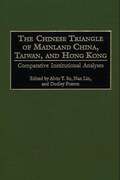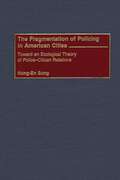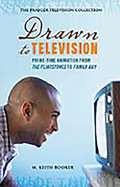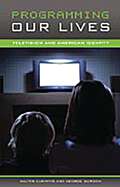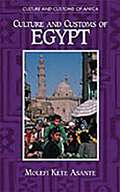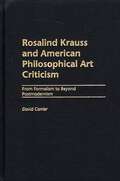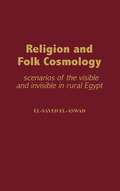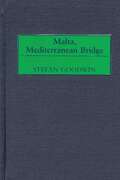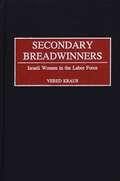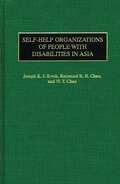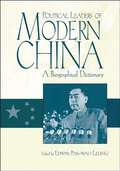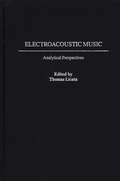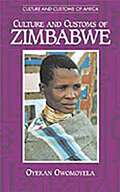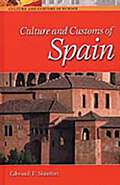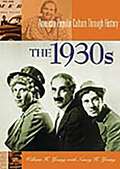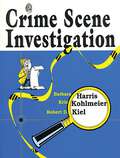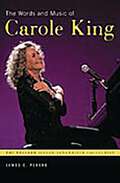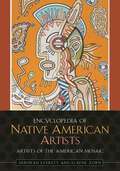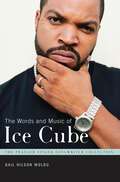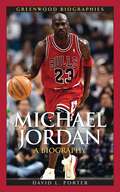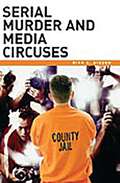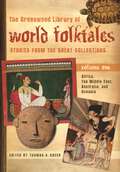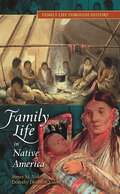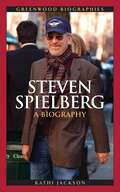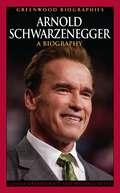- Table View
- List View
The Chinese Triangle of Mainland China, Taiwan, and Hong Kong: Comparative Institutional Analyses (Controversies in Science)
by Alvin Y. So Nan Lin Dudley PostonThe Chinese triangle of mainland China, Hong Kong, and Taiwan constitutes one of the most dynamic regions in the world economy. Since the late 1970s, these three societies have experienced increasing economic integration; however, studies aimed at analyzing and explaining this integration have often overlooked the very important role social institutions have played in the shaping of this process. To fill this gap, this book adopts a systematic institutional approach designed to examine the different patterns of institutions in the three countries and to discuss how such social institutions as the economy, gender, social networks, and the Chinese diaspora have exerted a profound impact on all three societies. The chapters, taken together, argue that different patterns of institutional configuration have led to divergent paths of development, and that this divergence will have significant implications on the prospects for Chinese national reunification in the twenty-first century.The Introductory chapter provides a historical discussion on the origins and the transformation of the Chinese triangle during the second half of the twentieth century. The remainder of the volume is broken into four topics considered crucial for understanding the transformation of the Chinese triangle: economic transformation, gender, social networks, and the Chinese diaspora. As globalization impacts the Chinese triangle, studies that consider the issues from the perspective of social institutions will be increasingly important to understanding the area as it develops in the world economy.
The Fragmentation of Policing in American Cities: Toward an Ecological Theory of Police-Citizen Relations (Criminal Justice, Delinquency, and Corrections)
by Hung-En SungThe relationship between police and the communities and citizens they serve has long been a topic of study and controversy. Sung provides a place-oriented theory of policing to guide strategies for crime control and problem-oriented policing. He contends that community policing is a product of power relations among communities. Sung also explores: •how police and citizens interact with each other in stratified and residentially segregated communities •how services are delivered by police •how citizens respond to those charged with protecting them and enforcing the law Illuminating the police-neighborhood and advancing a clear hypothesis for explaining and predicting changes in police behavior, this both provides a conceptual platform for public policy debate, planning, and evaluation of police, public safety, and democratic governance.According to Sung, place has everything to do with the success of community policing, and the attitudes of both police and citizens contribute to the success or failure of police initiatives as well as the level of crime inherent in a community. By focusing on the social and political forces that shape the residential patterns of American cities and the organization of police work, Sung provides a theoretical framework for considering the relations between police and citizens in different neighborhoods. He concludes that current modes of police-community relations and crime prevention will improve only if the policies adopted encourage the transformation of marginal communities into communities where citizens feel a shared responsibility for maintaining and peace and order. This unique contribution to a growing field of study provides an ecological theory of police-citizen relations that begins with the inequality and segregation inherent in many American cities.
Drawn to Television: Prime-Time Animation from The Flintstones to Family Guy (The Praeger Television Collection)
by Prof. M. Keith BookerSince late evening cartoons first aired in 1960, prime-time animated series have had a profound effect on American television and American culture at large. The characters and motifs from such shows as The Flintstones and The Simpsons are among the best-known images in world popular culture; and tellingly, even series that have not done well in prime time—series like The Jetsons, for instance—have yielded similarly iconic images. The advent of cable and several new channels devoted exclusively to animated programming have brought old series back to life in syndication, while also providing new markets for additional, often more experimental animated series. Even on the conventional networks, programs such as The Flintstonesand The Simpsons, not to mention Family Guy and King of the Hill, have consistently shown a smartness and a satirical punch that goes well beyond the norm in network programming. Drawn to Television traces the history of prime-time animation from The Flintstones initial extension of Saturday mornings to Family Guy and South Park's late-night appeal in the 21st century. In the process, it sheds a surprising light on just how much the kid inside us all still has to say.Drawn to Television describes the content and style of all the major prime-time animated series, while also placing these series within their political and cultural contexts. It also tackles a number of important questions about animated programming, such as: how animated series differ from conventional series; why animated programming tends to be so effective as a vehicle for social and political satire; what makes animated characters so readily convertible into icons; and what the likely effects of new technologies (such as digital animation) will be on this genre in the future.
Programming Our Lives: Television and American Identity
by Walter Cummins George GordonIn this timely examination of television and American identity, Cummins and Gordon take readers on an informed walk through the changes that TV has already wrought-and those still likely to confront us.Commercial television in America is less than 60 years old, yet it has had an enormous impact on what we like, what we do, what we know, and how we think. A family transplanted from the 1940s to the present day would certainly be stunned by a fundamentally different world: instead of gathering in the living room for a shared evening of radio, they would be scattered around the house to indulge their individual interests on one of a hundred cable channels; instead of a society with rigid racial and ethnic divisions, they would see people of different ethnicities in passionate embraces; and certainly they would see very different sets of values reflected across the board. They would, in short, find themselves in an unrecognizable America, one both reflected in and shaped by television, a medium that has been shown to have an unprecedented influence on our lives both for better and for worse.By focusing on the development of television within the cultural context that surrounds it, and drawing on such phenomena as quiz shows, comedy hours, the Kennedy assassination, the Olympics, sitcoms, presidential ads, political debates, MTV, embedded journalism, and reality TV, the authors reveal television's impact on essential characteristics of American life. They cover topics as diverse as politics, crime, medicine, sports, our perceptions, our values, our assumptions about privacy, and our unquenchable need for more things. In addition, they consider the future of the medium in the light of the proliferation of programming options, the prevalence of cameras and receivers in our lives, the growing links between TV and computers, and the crossed boundaries of television throughout the world.
Culture and Customs of Egypt (Culture and Customs of Africa)
by Molefi K. Ph.D.Modern Egypt blends African history and geography with Arab culture and religion. With its position at the crossroads of Africa, its status as a major Islamic nation, and continuing interest in its ancient monuments, Egypt makes for fascinating study. This volume provides an accessible, up-to-date overview of a society that greatly evolved, yet retains traces of attitudes and behaviors from the days of the Pharaohs.This volume's insights into everyday life, sociopolitical structures, and cultural institutions transcend ordinary guide books. Asante, a noted Africanist, authoritatively presents the richness of Egypt from the Nile to the Nubian influence, to Cairo congestion and carpet schools. Chapters describe the land, people, history, education, tourism, religion, art and architecture, food, social customs and lifestyles, literature, media, cinema, and performing arts. A chronology, glossary, and numerous photos enhance the text.
Rosalind Krauss and American Philosophical Art Criticism: From Formalism to Beyond Postmodernism (Non-ser.)
by David CarrierRosalind Krauss is, without visible rival, the most influential American art writer since Clement Greenberg. Together with her colleagues at ^IOctober^R, the journal she co-founded, she has played a key role in the introduction of French theory into the American art world. In the 1960s, though first a follower of Greenberg, she was inspired by her readings of French structuralist and post-structuralist materials, revolted against her mentor's formalism, and developed a succession of radically original styles of art history writing. Offering a complete survey of her career and work, ^IRosalind Krauss and American Philosophical Art Criticism: From Formalism to Beyond Postmodernism^R comprises the first book-length study of its subject.Written in the lucid style of analytic philosophy, this accessible commentary offers a consideration of her arguments as well as discussions of alternative positions. Tracing Krauss's development in this way provides the best method of understanding the changing styles of American art criticism from the 1960s through the present, and thus provides an invaluable source of historical and aesthetic knowledge for artists and art scholars alike.
Religion and Folk Cosmology: Scenarios of the Visible and Invisible in Rural Egypt (Non-ser.)
by el-Sayed el-AswadThis study refutes both the Western dominant paradigm of modernity and the Eurocentric stereotype of traditional Muslim culture, and demonstrates that rural Egyptians have their own paradigm of secular modernism that does not negate religious or sacred orientations. Islam is associated with ongoing attempts at religious purification and cultural unification and is inimical to cultural homogenization encouraged by Western globalization.Provides a holistic interpretation of the interplay between religion and folk cosmology, challenging the stereotypes that relegate traditional people to backwardness and a peripheral space or locality. Within this Muslim society the global/local nexus is one of ongoing creative integration, not separation. The cosmology can best be understood in the context of its totality, encompassing both visible and invisible zones.Muslims articulate personal or private order as well as social order within their cosmology. This cosmological view, endowing people with a unique imaginative sense of engagemenet with a supraphenomenal reality, accentuates the belief that divine cosmic invisible higher power surpasses any other power. Such a belief represents an inexhaustible source of spiritual and emotional empowerment that may be politically mobilized in certain critical moments and depicted as a religious, holy struggle, or jihad.
Malta, Mediterranean Bridge
by Stefan GoodwinThis scholarly yet accessible book explores the social anthropology of Malta within the context of regional cultural exchange between the Maltese and their neighbors. Contributors to Malta's rich cultural development have been the Phoenicians, Carthaginians, Sicilians, Greeks, Romans, Berbers, Arabs, Turks, Normans, Spaniards, French, British, and others. Other important contributors have been the Holy See and the Order of St. John, whose members have often been known simply as the Knights of Malta.Malta is a missing link to understanding many interrelationships among Mediterranean peoples and civilizations that hitherto have remained hidden or problematic. Located at the center of the Mediterranean Basin, Malta has been pivotal in numerous cultural transformations and can serve as a prism for understanding much that is important about lifeways in the Mediterranean: trade, subsistence systems, religion, urbanization, and the transmigration of peoples in war and in peace.
Secondary Breadwinners: Israeli Women in the Labor Force
by Vered KrausThe first comprehensive account of women's participation in the Israeli labor force, Kraus's book analyzes the trends in the status of women in paid employment since the 1960s. Covering all aspects of labor force participation, she fully integrates, and tracks over time, the many facets of social stratification by gender in Israeli society. Though founded as an egalitarian society, Kraus's research clearly shows that traditional attitudes toward women in the Israeli workplace have prevailed over those more progressive. Consequently, the widely held impression that the status of women in Israel differs from that of their counterparts in other liberal democratic societies, is shown to be more myth than reality.Though focusing on Israel, comparisons are made with other modern industrial societies, adding to the evidence accumulating on the changing trends in the status of women in the labor force that will interest scholars and students concerned as to how gender intersects with matters of political economy. Furthermore, the unique spectrum of communities in Israel, ranging from traditional Muslim Arab-Palestinians, through Christian Arab-Palestinians and Jews of African American origin, through to the more modernized Jews of European-American origin, enables simultaneous examinations of the various stages of women's integration in the labor force.
Self-Help Organizations of People with Disabilities in Asia (Non-ser.)
by Joseph Kin Kwok Raymond K.H. Chan W. T. ChanThis is a comparative analysis of the micro and macro characteristics of self-help organizations of people with disabilities (SHOPs) in seven selected countries and territories in Asia, namely China Mainland, Hong Kong, Japan, the Philippines, Taiwan, Thailand, and Vietnam. Since the 1980s, SHOPs have prospered in this region and were given a major role in the United Nations' forum and the International Year of Disabled Persons in 1981. The analysis shows the differences among the SHOPs in terms of the complexity of their structure, government's affirmative policy, legislation, and leadership qualities. These differences are due to the complex interplay among factors at local, national, and international levels.SHOPs in this region present a rather homogenous perception in their organization, leadership, social inclusion, and globalization, despite the marked differences in their societies. SHOPs tends to be domocratic and consensual in nature, and led by elected members with assistance from paid professional and clerical support. The self-help organizations are positively regarded in these countries.
Political Leaders of Modern China: A Biographical Dictionary (Non-ser.)
by Edwin LeungThrough the individual characteristics of China's political leaders, a nation-building process began. Chinese leaders fell into two categories of reformers: conservative and liberal. Conservative reformers saw a corruption of the moral order of society that needed to be eliminated in order to restore the country's moral integrity, while liberal reformers attempted to embrace the flaws and lead China toward Socialism. One hundred Chinese leaders—from the Opium War to 2001—are profiled in this comprehensive biographical dictionary.This book provides the most up-to-date coverage of modern Chinese political leadership during the Imperial, Republican, and Communist periods. Political leaders throughout each period had a common desire for reform within the country while maintaining China's political and cultural legacy. Leung invokes the uniqueness of those leaders in their struggle for personal gain and national improvement as they fought to preserve traditional values. Written by 30 international scholars and experts in the field using both Western and Chinese sources, this is the most authoritative dictionary on the subject.
Electroacoustic Music: Analytical Perspectives (Contributions to the Study of Music and Dance)
by Thomas LicataElectroacoustic music, a flourishing medium for over half a century, remains today, in a wide array of technological forms, one of the major areas of creative activity in music. However, it has long been overlooked in theoretical studies—possibly in part because it does away with traditional scores and notation. In this landmark collection, a group of distinguished composers and theorists who have actively worked in the field present detailed analyses of important electroacoustic works while also demonstrating some recent approaches to the analysis of the music of this medium. Included here are discussions of such significant works as Karlheinz Stockhausen's Gesang der Jünglinge (1955/56), Iannis Xenakis' Diamorphoses (1957), and Jean-Claude Risset's Contours (1982). Overall, the collection aims to elucidate the sonic design of each of the electroacoustic music works under investigation, using its best examples as a lens through which to examine an unduly neglected genre.Demonstrating recent techniques in the analysis of electroacoustic music, the volume also considers various compositional approaches as well as computer applications that have become an irreplaceable tool in the composing of this music. So little has been written about this 20th-century art form that Electroacoustic Music: Analytical Perspectives is at once a fresh, bold step forward in musicology and analysis.
Culture and Customs of Zimbabwe (Culture and Customs of Africa)
by Oyekan OwomoyelaZimbabwe, formerly known as Rhodesia, won its independence from Great Britain in 1980 yet continues to feel the impact of Western lifestyles and prejudices. This rich, accessible overview freshly examines Zimbabwe, evoking the contemporary ways of life in a largely homogenous and agricultural country.Students and general readers will discover an engaging narrative that ranges from an explanation of the beer culture to a powerful discussion of marriage, family, and gender roles from the Zimbabwean perspective. Owomoyela also authoritatively conveys the coexistence of traditional and Western forces today in such areas as religion and music. A chronology and glossary accompany the text.
Culture and Customs of Spain (Culture and Customs of Europe)
by Edward F. StantonModern Spain is a revelation in this up-to-date overview. Stanton vibrantly describes the startling variety of landscape, people, and culture that make up Spain today. Included are a context chapter and others on religion, customs, media, cinema, literature, performing arts, and visual arts. Students of Spanish and a general audience will be rewarded with engrossing insights into what writer Ernest Hemingway called the very best country of all.Spain is a modern European nation, yet Spaniards are fiercely tied to their individual towns and regions—with their distinct social customs, dialects or languages, foods, landscape, and lifestyles—more than to a united country. Culture and Customs of Spain conveys the extremes, such as the hard-working Catalan contrasted to the leisurely paced Castilian, coexisting in first and third world conditions, and the love/hate relationship with the Catholic Church. Spain's institutions are described, and its contributions to the world—from unparalleled literature and cuisine to flamenco and filmmaker Pedro Almodovar—are celebrated. A chronology and glossary complement the text.
The 1930s (American Popular Culture Through History)
by William H. YoungMost historical studies bury us in wars and politics, paying scant attention to the everyday effects of pop culture. Welcome to America's other history—the arts, activities, common items, and popular opinions that profoundly impacted our national way of life. The twelve narrative chapters in this volume provide a textured look at everyday life, youth, and the many different sides of American culture during the 1930s. Additional resources include a cost comparison of common goods and services, a timeline of important events, notes arranged by chapter, an extensive bibliography for further reading, and a subject index.The dark cloud of the Depression shadowed most Americans' lives during the 1930s. Books, movies, songs, and stories of the 1930s gave Americans something to hope for by depicting a world of luxury and money. Major figures of the age included Fred Astaire and Ginger Rogers, Irving Berlin, Amelia Earhart, Duke Ellington, the Marx Brothers, Margaret Mitchell, Cole Porter, Joe Louis, Babe Ruth, Shirley Temple, and Frank Lloyd Wright. Innovations in technology and travel hinted at a Utopian society just off the horizon, group sports and activities gave the unemployed masses ways to spend their days, and a powerful new demographic—the American teenager—suddenly found itself courted by advertisers and entertainers.
Crime Scene Investigation
by Barbara Harris Kris Kohlmeier Robert D. KielCast your students in the roles of reporters, lawyers, and detectives at the scene of a crime with this complete guide of detailed instructions and reproducibles. These interdisciplinary activities, based on an award-winning unit, help build valuable reasoning skills while developing knowledge in areas of language, science, history, and more.Who did it? How did they do it? Why did they do it? How do you prove it? Cast your students in the roles of reporters, lawyers, and detectives at the scene of a crime with this complete guide of detailed instructions and reproducibles. Excitement builds as participants examine clues, make a case, and go to trial. These interdisciplinary activities, based on an award-winning unit, help build valuable thinking and problem-solving skills while developing knowledge in areas of language, science, history, and more.
The Words and Music of Carole King (The Praeger Singer-Songwriter Collection)
by James E. PeroneThis long overdue examination of Carole King offers her legions of fans the chance to see how her work has developed over time, understand what her music means to other contemporary performers, and grasp its significance in American music at large.Name a Carole King song. Anyone who's been a fan of popular music over the past 45 years should be able to do it with ease. Will You Still Love Me Tomorrow?, Take Good Care Of My Baby, The Locomotion, One Fine Day, Up On The Roof, A Natural Woman, I Feel The Earth Move, Smackwater Jack, It's Too Late, So Far Away, You've Got A Friend. Few writers can claim such a formidable catalogue. Fewer still can with justice claim to have spoken for a generation.After collaborating with Paul Simon in high school and composing hits for The Shirelles; Aretha Franklin; The Monkees; Blood, Sweat & Tears; and other artists throughout the 1960s, Carole King launched herself into the spotlight with the 1971 album Tapestry. Tapestry sold over 22 million copies, and was one of the most important feminist statements of the day, not just because of the words or music, but because King maintained almost total control over her product. Carole King has continued composing and performing breakthrough work since Tapestry, though over the past 15 years audiences are more likely to have heard her music in films such as One True Thing, You've Got Mail, and A League of Their Own.In 1988, the National Academy of Songwriters presented King and her one-time husband and collaborator Gerry Goffin with the Lifetime Achievement Award. Goffin and King were inducted into the Rock and Roll Hall of Fame as non-performers in 1990. Carole King was inducted into the Songwriters Hall of Fame in 1986. Although Tapestry still stands as King's masterpiece, she recorded many other albums, including Fantasy, Colour of Your Dreams, City Streets, Pearls, Wrap Around Joy, Touch the Sky, Simple Things, Thoroughbred, Love Makes the World, Welcome Home, and Really Rosie. All of these are discussed in the course of this volume, as are songs covered and performed by other artists.
Encyclopedia of Native American Artists (Artists of the American Mosaic)
by Deborah Everett Elayne L. ZornIndigenous North Americans have continuously made important contributions to the field of art in the U.S. and Canada, yet have been severely under-recognized and under-represented. Native artists work in diverse media, some of which are considered art (sculpture, painting, photography), while others have been considered craft (works on cloth, basketry, ceramics).Some artists feel strongly about working from a position as a Native artist, while others prefer to produce art not connected to a particular cultural tradition.
The Words and Music of Ice Cube (The Praeger Singer-Songwriter Collection)
by Gail Hilson WolduIce Cube is one of the most influential figures in the history of rap and hip-hop. Best known for the vitriol of his angry black man recordings of the late 1980s and mid 1990s, Ice Cube epitomizes the genre often referred to as gangsta rap. Much of his music from these years is focused on the disturbing realities of life in black urban ghettos, and as a result it chronicles such complex and controversial issues as racial stereotypes, street gangs, racial profiling, black on black crime, teen pregnancy, absentee fathers, and male-female relationships. His recordings with NWA are noteworthy for their sardonic humor in discussing dire issues. The group's landmark CD Straight Outta Compton (1988) is a palette of urban woes recounted in aggressive and hostile street vernacular, while Ice Cube's recordings of the 1990s now represent paradigms of the gangsta style.The first three chapters of The Words and Music of Ice Cube explore Ice Cube's recordings between 1988 and 1996 and situate Ice Cube in the context of other rappers of this period-most notably Public Enemy, Ice-T, Tupac, Biggie, and Snoop Dogg-whose music also chronicled explosive issues in urban ghettos. The fourth chapter considers Ice Cube's career in film, beginning with a discussion of his performance in Boyz n the Hood and ending with a look at his most recent films, Barber Shop, Barber Shop II, Are We There Yet? And Are We Done Yet? The fifth and final chapter looks back over all of Ice Cube's work to date and considers his impact and his legacy in music and popular culture at large. .
Michael Jordan: A Biography (Greenwood Biographies)
by David L. PorterWith the possible exceptions of boxer Muhammad Ali and baseball player Babe Ruth, no athlete has made a greater impact on American society-or in the world-than Michael Jordan. Follow the life of one of the most recognizable athletes and living brands inside this engaging and balanced biography.He is among the best-known and wealthiest athletes in the history of organized sports. With the possible exceptions of boxer Muhammad Ali and baseball player Babe Ruth, no athlete has made a greater impact on American society-or in the world-than Michael Jordan. Follow the life of one of the most recognizable athletes and living brands inside this engaging and balanced biography.When basketball stars Larry Bird and Magic Johnson retired in the early 1990s, Michael almost single-handedly propelled the NBA to stratospheric levels of success and international visibility. As a player for the Chicago Bulls, he generated instant crowd thrills with his record-setting drives and dunks, selling countless books, newspapers, videotapes, NBA game tickets, and hours of television time. The NBA promoted Michael, basing its popularity on his image as the greatest showman in sports history. Yet his sports hero status extends beyond NBA records. Michael changed the game by becoming the most effectively marketed athlete of his generation. Nike and many other companies rode-and continue to ride-on the coattails of Air Jordan's legend. Author David Porter highlights Jordan's on and off the court accomplishments and examines his relationship with Chicago Bulls' coaches, his commercial endorsements, and his current role as part-owner of the Charlotte Bobcats. A chronology, photos, career stats, and a bibliography of print and electronic resources round out this biography of one of the most influential athletes of the twentieth century.
Serial Murder and Media Circuses
by Dirk C. GibsonThe Axman of New Orleans specialized in killing grocers of Italian descent in the 1910s, apparently to promote jazz music. Dorothea Puente was a little old landlady who murdered her tenants, but kept cashing their government checks. The Manson Family terrorized California in the 1960s, as did the Hillside Stranglers a decade later. Twelve serial murder cases, occurring in eight decades between the 1890s and 1990s, had one thing in common: significant presence of the mass media. This book examines these specific cases of serial murder, and the way the media became involved in the investigations and trials of each.Gibson argues that the American media plays a multidimensional and integral role in serial killings and their investigation—and that this role is not generally a positive one. Serial murder cases motivate the media in unfortunate ways, and the result is that even typically respectable media organizations can be involved in such things as document theft, or in interfering with the capture of serial murderers on the run. This link between multiple murderers and mass communication is not accidental or coincidental; rather, the relationship between the press and serial killers is one of extraordinary importance to both parties. Gibson examines the role of the media in serial murder cases; the body of knowledge on serial murder as seen through the lens of mass communication; the effectiveness of law enforcement responses to serial murderers and how they might be improved if the mass communication influence was better understood; the magnitude of the serial murder problem; and the interaction between the media, the killers, and serial murder investigations. Specific examples and numerous quotes are provided throughout to illustrate this strange and detrimental relationship between media and serial murderers.
The Greenwood Library of World Folktales [4 volumes]: Stories from the Great Collections [4 volumes]
by Thomas A. GreenFrom the Amazon to the Arctic, the world is teeming with diverse cultures. There's no better way for students to explore the world's cultural diversity than through its folktales.Presenting tales from the foundations of the world's traditions, literature, daily life, and popular culture, The Greenwood Library of World Folktales: Stories from the Great Collections gathers together a vast array of folktales and arranges them according to region or cultural group, thus allowing students to quickly and conveniently learn about the tales of particular cultures. Some of these stories have been told for centuries, while others have emerged only in recent times. The four-volume set includes introductory essays in addition to explanatory headnotes, and provides bibliographies on particular regions as well as a selected, general bibliography. The most comprehensive work of its kind, this set gives students and general readers a guided tour of the world's folktales.Each volume of the set is devoted to a particular broad geographic region:Volume 1: Africa, The Middle East, Australia and OceaniaVolume 2: AsiaVolume 3: EuropeVolume 4: North and South AmericaAccessible, informative, and entertaining, this book will help literature students learn how to analyze texts and understand the traditions at the heart of many of the world's literary masterpieces. It will also help social studies students learn about the world's cultures and respect ethnic diversity.
Family Life in Native America (Family Life through History)
by James M. Volo Dorothy VoloThis volume provides insight into the family life of Native Americans of the northeast quadrant of the North American continent and those living in the adjacent coastal and piedmont regions. These Native Americans were among the most familiar to Euro-colonials for more than two centuries. From the tribes of the northeast woodlands came "great hunters, fishermen, farmers and fighters, as well as the most powerful and sophisticated Indian nation north of Mexico [the Iroquois Confederacy].
Steven Spielberg: A Biography (Greenwood Biographies)
by Kathi JacksonSteven Spielberg is hailed as one of the most influential and commercially successful film directors in motion picture history. Through his role in developing, directing, and driving the special effects of many of the biggest blockbusters in movie history, includingJaws, Raiders of the Lost Ark, E.T., Saving Private Ryan, Jurassic Park, Schindler's List, and Minority Report, Spielberg changed the way movies are made and left an indelible mark on popular culture. This biography traces his rise from shooting films as a shy young boy with the family's 8 mm camera to his first unpaid job at Universal Studios, to the rise of DreamWorks, the studio Spielberg founded and quickly turned into a filmmaking powerhouse. While Spielberg's best work may lie ahead, this compelling biography puts his legendary career and work to date into perspective by offering analysis and commentary from fans and critics alike.Whether about an alien lost in suburbia or the battles of World War II, Spielberg has directed and produced many of the most talked about movies of the past 30 years. Students interested in the history of film and the filmmaking industry will find this biography endlessly fascinating.
Arnold Schwarzenegger: A Biography (Greenwood Biographies)
by Louise Krasniewicz Michael BlitzFrom his role in The Terminator to his more recent work as Governator of California, Arnold Schwarzenegger has played a major role in American popular culture. This accessible and entertaining biography traces the trajectory of Arnold's career-sports figure turned movie star turned entrepreneur turned politician. Elected as governor of California in 2003, Arnold Schwarzenegger now dramatically and vividly represents the determination and, to a great extent, the relentlessness necessary for achieving great fame, political power, and iconic status. While many readers will have read about his benchmark achievements, this biography will reveal the surprising complexities behind the public scenes and put them into a larger cultural context. Photos and a timeline of significant events round out this insightful biography.From his role in The Terminator to his more recent work as Governator of California, Arnold Schwarzenegger has played a major role in American popular culture. This biography traces the fascinating trajectory of Arnold's career-sports figure turned movie star turned entrepreneur turned politician. Elected as governor of California in 2003, Arnold Schwarzenegger now dramatically and vividly represents the determination and, to a great extent, the relentlessness necessary for achieving great fame, political power, and iconic status.Arnold's life has been characterized by public notoriety. While many readers will have heard or read about his benchmark achievements, this biography will reveal the surprising complexities behind the public scenes and put them into a larger cultural context. Photos and a timeline of significant events round out this entertaining and insightful biography.
